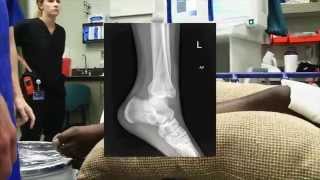Tuesday, 23 December, 2025г.
















Где искать: по сайтам Запорожской области, статьи, видео ролики
пример: покупка автомобиля в Запорожье
The Sool's method_ A new reduction method of anterior shoulder dislocation
The effectiveness of a newly developed reduction method of anterior shoulder dislocations; the Sool’s method
Accepted at American Journal of Emergency Medicine
Objective: The objective of this study was to demonstrate the effectiveness of the Sool’s method of anterior shoulder dislocations.
Method: This was a retrospective study conducted in a university affiliated emergency department (ED). Sequence of the Sool’s method: (1) the patient is placed in a sitting position. (2) The patient to raise the affected arm and hand with forward flexion until the angle of the arm and trunk reaches 90 degree, and put the patient’s hand on the operator’s shoulder of same side. (3) The operator grabs the muscles of anterior part of deltoid and pectoralis of affected side with a hand of the patient’s hand putted on and grabs the elbow of affected side with an opposite hand and pulls the elbow slowly with slight lateral rotating and massages the muscles of anterior part of deltoid and pectoralis.
Result: 59 eligible patients presented to the ED were recruited. 35 patients were recruited to TSRT and 24 patients were recruited to the Sool’s method. The rate of successful reduction in ED was 80% (26/35) in TSRT group and 75% (18/24) in the Sool’s method group (P=0.75). The length of (LOS) in the ED was 72.3 minutes in the Sool’s method group and 98.4 minutes TSRT group (P=0.037). No significant difference in neurovascular deficit before and after reduction between both groups was reported. In the Sool’s method group, procedural time of successfully reduced cases was shorter than failed cases (P=0.015).
Conclusions The Sool’s method was as successful as other methods in reducing shoulder dislocations. Sool’s method has shown encouraging results including significant reduction in LOS in ED, and unnecessary use of sedation. Sool’s method is technically easy and requires only a chair or a bed to sit on and a single operator, which reduces the use of valuable ED resources.
Теги:
Joint Dislocation (Disease Or Medical Condition) Reduction (Medical Treatment) Shoulder (Anatomical Structure) Massage For Relaxation (Film) Dislocated Shoulder (Disease Or Medical Condition) Anatomical Terms Of Location Hands Medicine (Field Of Study) Put Your Clan Down Method emergency medicine american journal of emergency medicine
Похожие видео
Мой аккаунт


 У вашего броузера проблема в совместимости с HTML5
У вашего броузера проблема в совместимости с HTML5


